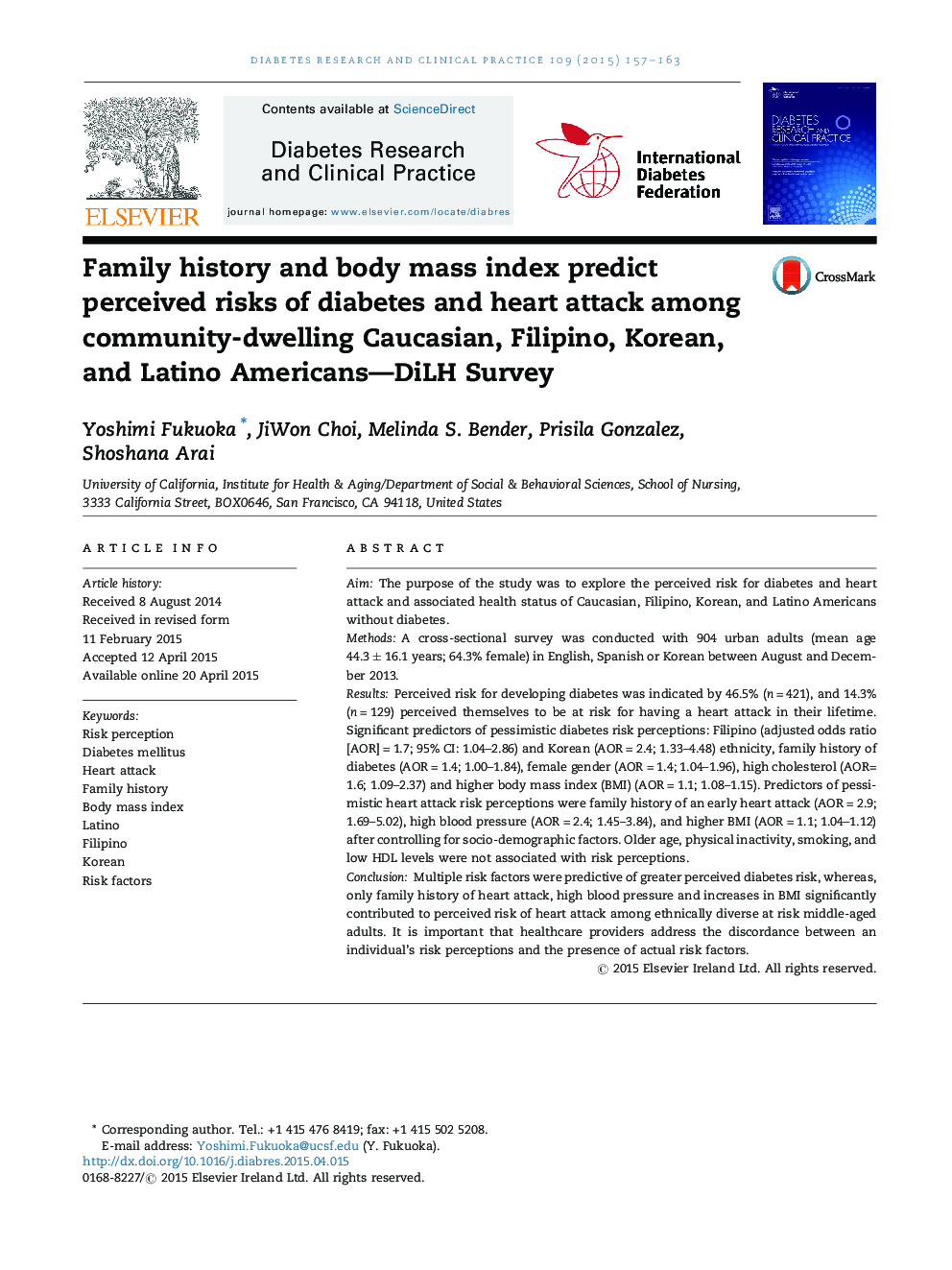| کد مقاله | کد نشریه | سال انتشار | مقاله انگلیسی | نسخه تمام متن |
|---|---|---|---|---|
| 5899138 | 1155585 | 2015 | 7 صفحه PDF | دانلود رایگان |

- A multi-racial/ethnic sample of 904 adults answered a perceived risk survey.
- Only 9.3% perceived a dual risk with diabetes (DM) and heart attack (HA).
- BMI and a family history of DM/HA were related to a perceived risk of DM/HA.
- Age and physical activity were not associated with either risk perception.
- Discrepancies between risk perception and actual risks should be assessed.
AimThe purpose of the study was to explore the perceived risk for diabetes and heart attack and associated health status of Caucasian, Filipino, Korean, and Latino Americans without diabetes.MethodsA cross-sectional survey was conducted with 904 urban adults (mean age 44.3 ± 16.1 years; 64.3% female) in English, Spanish or Korean between August and December 2013.ResultsPerceived risk for developing diabetes was indicated by 46.5% (n = 421), and 14.3% (n = 129) perceived themselves to be at risk for having a heart attack in their lifetime. Significant predictors of pessimistic diabetes risk perceptions: Filipino (adjusted odds ratio [AOR] = 1.7; 95% CI: 1.04-2.86) and Korean (AOR = 2.4; 1.33-4.48) ethnicity, family history of diabetes (AOR = 1.4; 1.00-1.84), female gender (AOR = 1.4; 1.04-1.96), high cholesterol (AOR= 1.6; 1.09-2.37) and higher body mass index (BMI) (AOR = 1.1; 1.08-1.15). Predictors of pessimistic heart attack risk perceptions were family history of an early heart attack (AOR = 2.9; 1.69-5.02), high blood pressure (AOR = 2.4; 1.45-3.84), and higher BMI (AOR = 1.1; 1.04-1.12) after controlling for socio-demographic factors. Older age, physical inactivity, smoking, and low HDL levels were not associated with risk perceptions.ConclusionMultiple risk factors were predictive of greater perceived diabetes risk, whereas, only family history of heart attack, high blood pressure and increases in BMI significantly contributed to perceived risk of heart attack among ethnically diverse at risk middle-aged adults. It is important that healthcare providers address the discordance between an individual's risk perceptions and the presence of actual risk factors.
Journal: Diabetes Research and Clinical Practice - Volume 109, Issue 1, July 2015, Pages 157-163